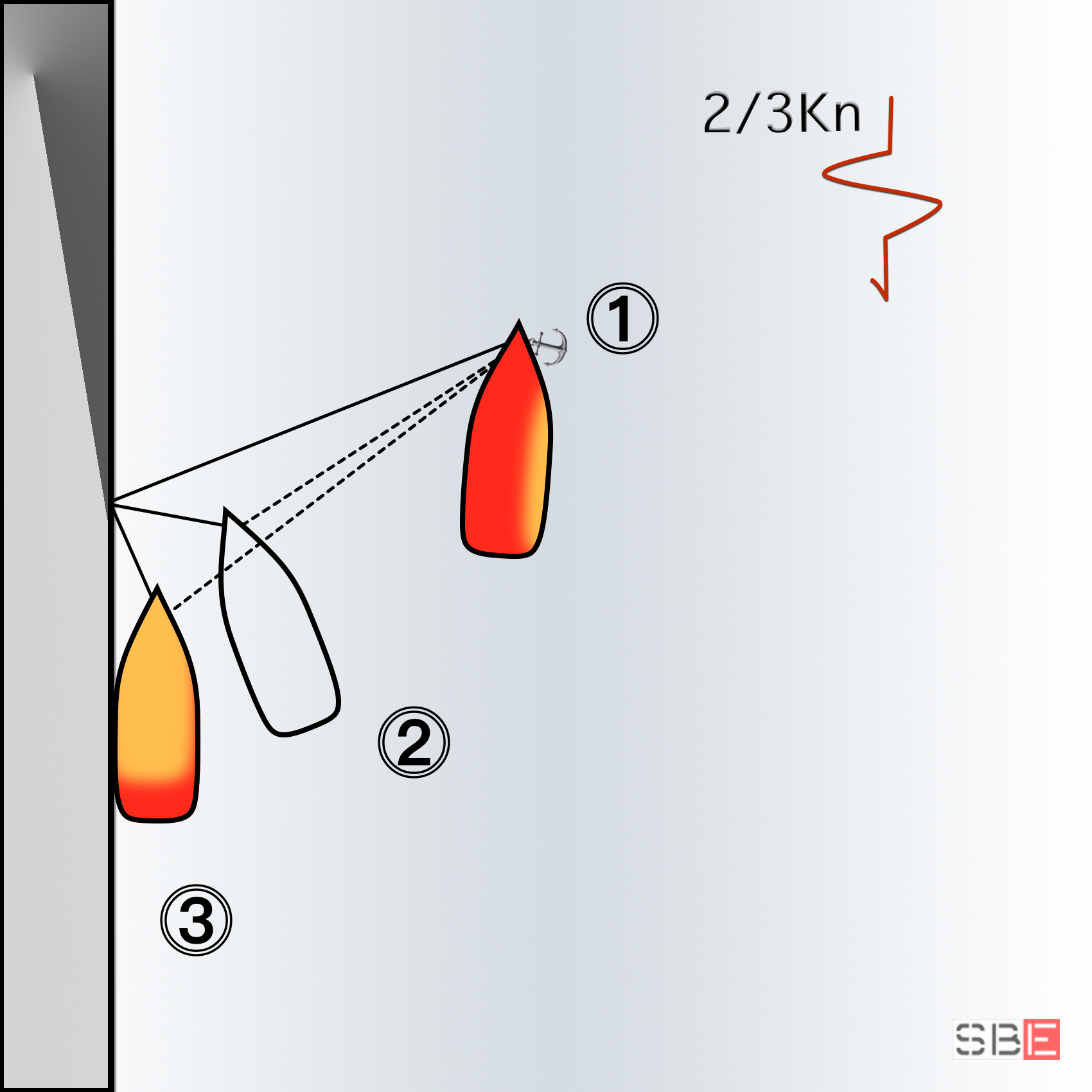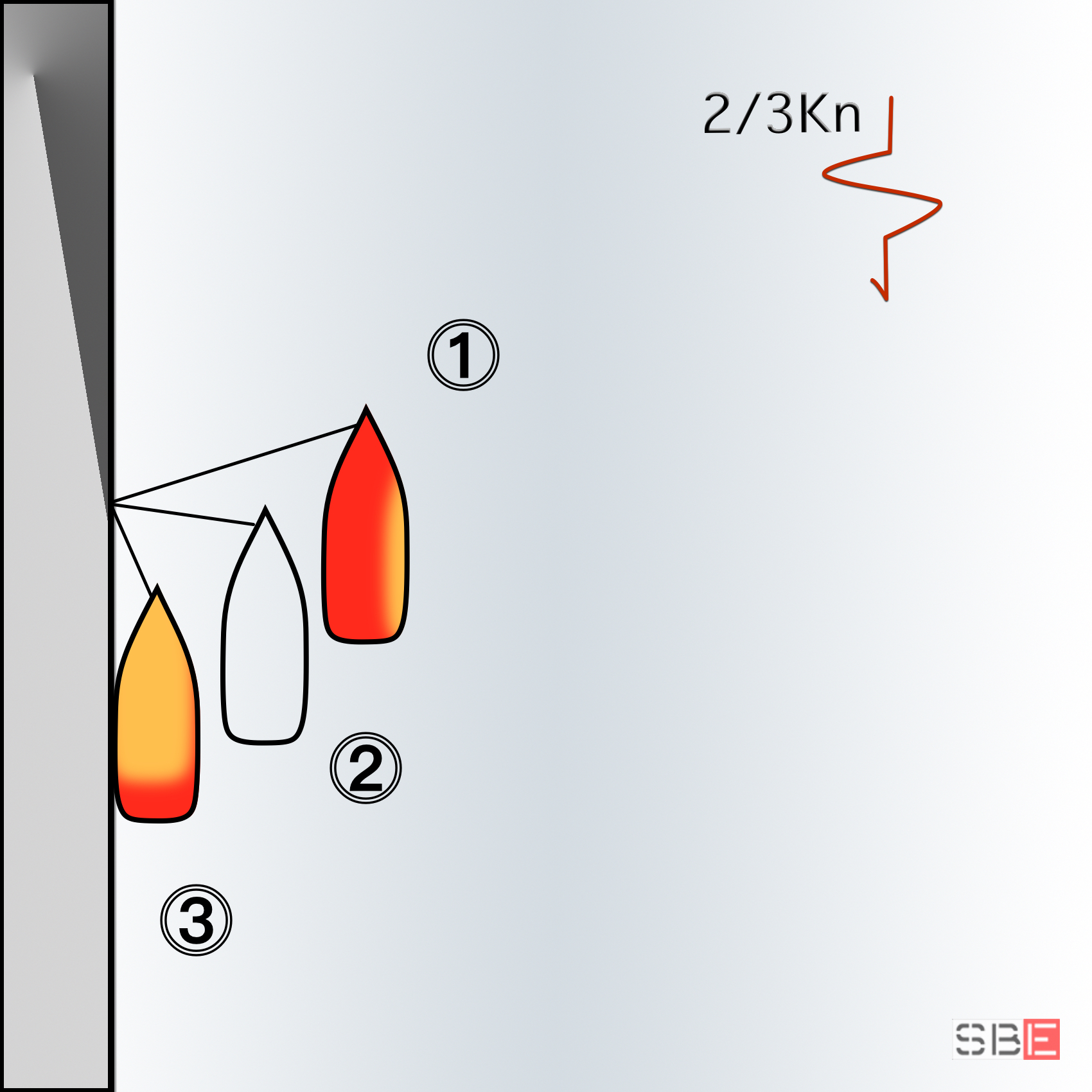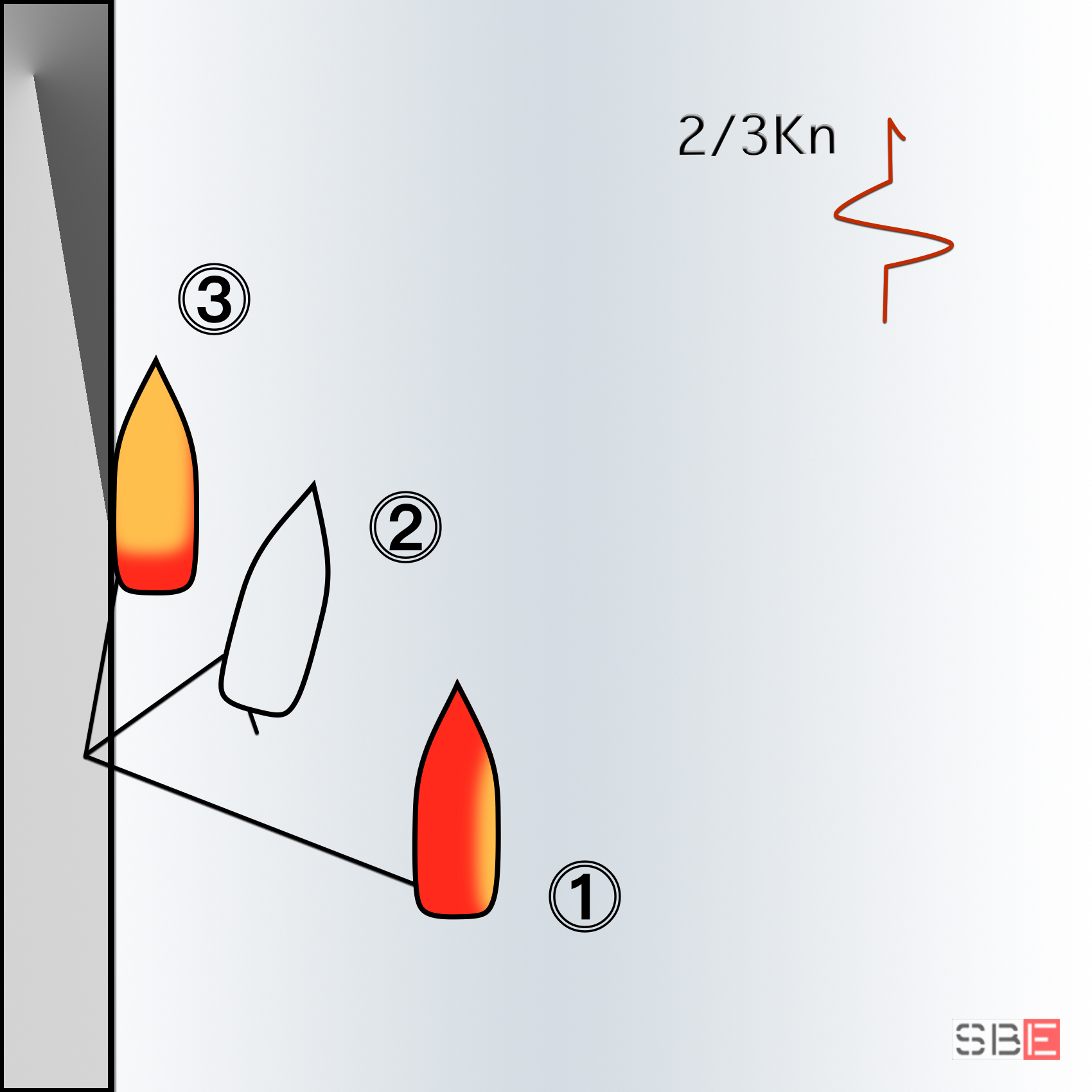Manoeuvre 2; Mooring with Opposite Current
In this example, we consider a traditional bulk carrier:
- 130 meters in length,
- A single prop right-handed fixed pitch, and
- Without a bow thruster.
Luckily there is calm wind and sea. The vessel must moor ‘port side alongside’ with a strong bow current.
This type of mooring is frequent in rivers and places with a wide range of tides where the current can reach sensitive values. The first rule is to approach the quay parallel to the latter, maintaining the bow ‘into the current’ for optimal control of the ship’s directionality.
We can moor with or without the use of an anchor(s).
In the first case, The ship must overtake the mooring position by approximately one hull with a slightly higher speed than the current. We drop the starboard anchor, with the rudder fully positioned to port, stopping the engine. These actions will lead to an initial bow swinging towards the dock and a rapid reduction in speed. If necessary, we control the residual speed with a kick astern, adjusting the approaching towards the berth by releasing or braking the chain or with the engine’s kicks and the rudder from one side or the other.

The ship is pushed by the opposite current, controlled by the anchor and the engine. On approaching the quay, we will send the first headline ashore. Once we have held the bow with the mooring line on the dock and the anchor at sea, we will direct it with the engine and rudder towards its final mooring.
In the second case, when we cannot use the anchor for mooring, we will handle the vessel the same, making sure to proceed at minimum speed with the bow to the current and the ship parallel to the quay, at a distance that allows us to send a mooring line ashore. Once abeam of the bollard that we will use for the headline, we will stop the engine and control the approach to the quay with the engine kicks and rudder. Always keep the ship parallel to the dock to avoid sudden falls due to the current effect.

The speed of the ship – concerning the current rate coming from forwarding – can make us move ahead, astern or keep us stationary. The vessel will always be under control depending on whether it is more significant, less than or equal to the latter. We will be able to direct the bow in any direction. Opposite current gives the advantage of relatively high ‘speed through the water’ with a reduced ‘speed over ground’.
Conversely, if the current comes from the stern, to keep the ship under control, it would be necessary to proceed at a speed higher than the current itself, a rate not suitable for a mooring manoeuvre. The rudder loses effectiveness when the ship’s speed is equal to or less than the stream’s. Both the water pressure and the rejected propeller current are missing. If then, to stop the headway, we needed to put the engine astern, the paddle-wheel effects of the propeller would be added to the loss of effectiveness of the rudder, aggravating the situation of unmanageability.
When possible, it is good practice not to approach the ship to the quay with a current without the help of tugs. The current flow can easily make the ship’s steering uncontrollable.
However, if this is impossible and the necessity to moor with a current arises, the quay will have to have a lot of free space to minimise the related risks. Before reaching its final position, We must first pass the stern line from the ship’s mooring side.

The bollard must be beyond the ship’s centre towards the bow to allow the mooring line to fix while the ship drops its speed.
It is advisable to swing the ship’s bow slightly to starboard to prevent the stern from pushing out and making it challenging to send the mooring line. The engine and rudder must control the rope that will come under tension as necessary.
This mooring is risky and will hardly get the ship into position until shifting on the mooring lines. For this reason, the berth must be free from obstacles forward of the final place for a long stretch.
